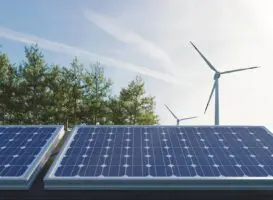January 2016 was the eleventh successive month to record an increase in total demand for electricity in the National Electricity Market (NEM).
Total annual demand is now 1.7 per cent higher than the minimum level recorded in the year to February 2015 (Figure 3), a sustained rate of increase not seen for nearly seven years.
As has been the case for over a year, Queensland was the main driver of growth, with demand 4.5 per cent higher than in the year to February 2015, mainly driven by use of electric motors to power equipment in the coal seam gas fields.
 Demand increases in the other states were much smaller, in both relative and absolute terms. Demand actually fell slightly in Victoria, but was still 1.0 per cent above the post Point Henry smelter closure minimum.
Demand increases in the other states were much smaller, in both relative and absolute terms. Demand actually fell slightly in Victoria, but was still 1.0 per cent above the post Point Henry smelter closure minimum.
Without Queensland, the other four NEM states combined still recorded an increase in annual demand of 0.6 per cent over the same period.
A significant part of this increase has occurred in the past three months. In the summer months, hot weather is a major driver of demand for electricity, as examined in last month’s Electricity Update. In particular, electricity consumption rises sharply on particularly hot days.
If we define hot days as days with maximum temperatures above 30C, there have so far this summer (November to January) been nearly twice as many as there were over the same period last summer, in both Melbourne and Adelaide.
There were also more in Sydney, though the difference is less marked. It is therefore possible that seasonal weather may be contributing to the increase in electricity demand, but it is very difficult to believe that this is the only factor, apart from Queensland gas industry demand, responsible for the reversal of the previous declining trend of electricity demand.
In last month’s Electricity Update we drew attention to how increasing efficiency in the use of electricity could contribute to reducing the size of extreme peaks currently experienced on very hot days, particularly in Victoria and SA.
Energy efficiency is also very effective in reducing total demand for electrical energy (in addition to peak demand).
In particular, mandatory energy efficiency standards for new buildings and equipment, properly regulated and enforced, can make a large impact while also providing substantial benefits, in the form of lower electricity bills, to electricity users.
Unfortunately, however, national progress in this area has been at a virtual standstill for the past three years or more.
The reductions in total electricity demand, now apparently ended, that CEDEX has charted were in large part a legacy of efficiency standards and programs put in place prior to 2012. The consequences of inaction on the efficiency front are now showing up in rising electrical demand and related emissions.
Over the past several months, Electricity Update has noted that brown coal generators have been losing market share, not only relatively but in absolute terms also, to NSW black coal generators.
This has been associated with an increase in the mean Victorian pool price from around $27 per MWh between October 2014 and March 2015, to around $35 per MWh since June 2015.
The mean price was higher again in December, but mainly because of a series of extreme short term price spikes during the pre-Christmas heatwave, which was described in the January Electricity Update. NSW prices are closely linked to Victorian prices and for most of the time slightly higher.
It is fairly clear that at least some of owners of brown coal power station have been willing to sacrifice sales volume to improve the profitability of their sales. The increase in Australia’s emissions from electricity generation has been kept in check as a consequence of this strategy.
It would be reasonable to interpret these changes as a clear demonstration that the NEM wholesale market is working in a way consistent with the overall objectives of the National Electricity Objective and Law of 1996, which include, by implication, ensuring the overall financial stability of the system as a whole.
But mitigation of greenhouse gas emissions forms no part of either the Objective or the Law. The short term reduction in emissions is entirely fortuitous.
This is an edited extract of Hugh Saddler’s latest CEDEX report on Australian electricity generation and emissions, supported by Pitt & Sherry and The Australia Institute.









